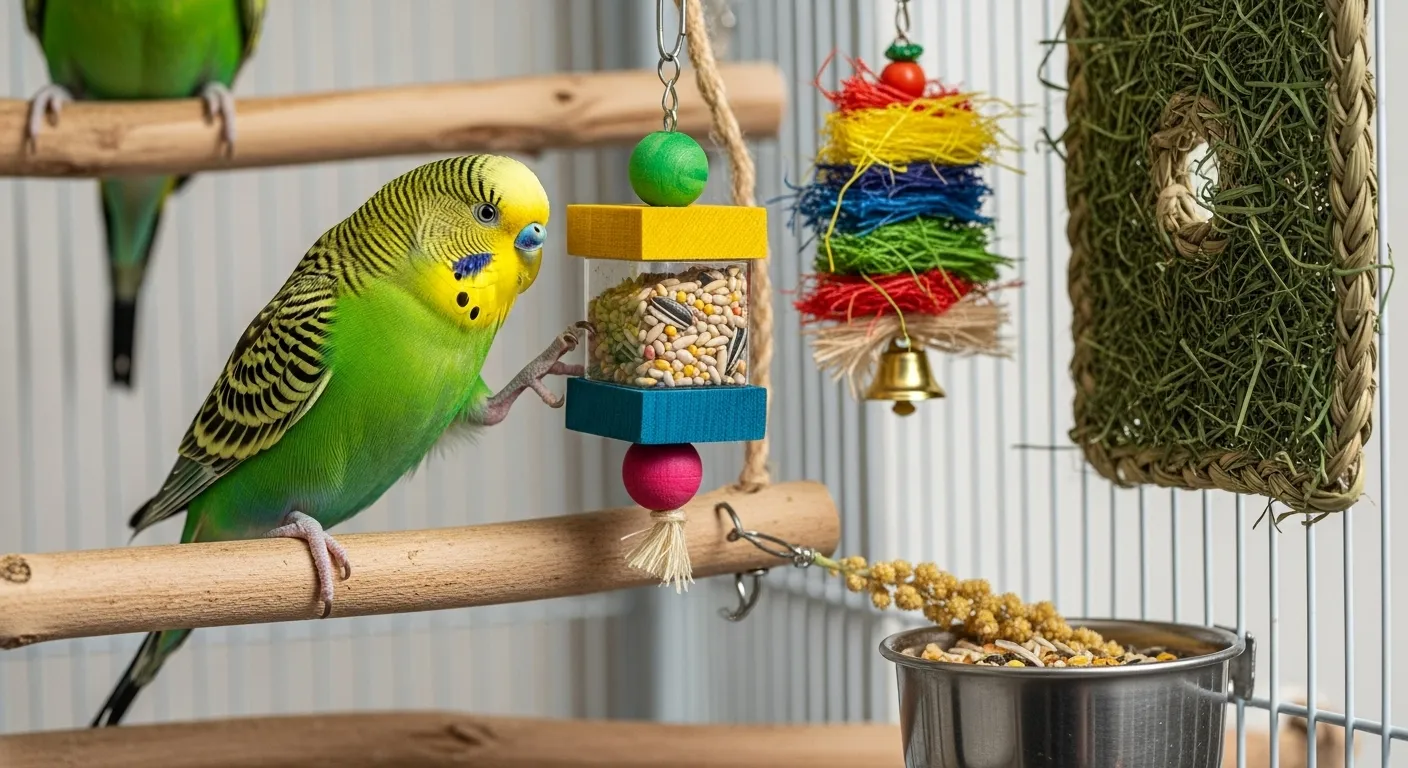
1. Budgerigar (Parakeet) – The Charismatic Chatterbox
Often simply called parakeets in the United States, Budgerigars (*Melopsittacus undulatus*) are small, long-tailed parrots native to Australia. Their cheerful disposition, small size, and relatively low purchase price make them one of the most popular pet birds in the world. They are an excellent choice for dedicated beginners who have done their research on how to care for a budgie properly.
Overview and Temperament
With proper care, a budgie can live between 5 and 15 years. They are highly social and thrive on interaction with their human flock. When well-socialized, they are playful, curious, and can become quite affectionate. One of their most endearing traits is their ability to mimic human speech. While their voices are gravelly compared to larger parrots, some budgies can develop vocabularies of hundreds of words. They are active birds that need plenty of stimulation to prevent boredom.
Specific Care Needs for Budgies
Diet: A budgie’s diet should consist of a high-quality, small-sized pellet as the staple. This should be supplemented daily with finely chopped fresh vegetables, such as kale, broccoli, and carrots. A standard portion is about 1.5 to 2 teaspoons of pellets per bird, per day. A small slice of apple or a few blueberries can be offered as a treat a couple of times a week. Seed mixes should be reserved as occasional treats for training, not a main food source.
Housing: For a single budgie, a cage should be at least 18 inches long, 18 inches wide, and 18 inches tall, though a wider flight cage is always preferable. Bar spacing must be no more than 1/2 inch. Equip the cage with a variety of natural wood perches, a cuttlebone for calcium, and a mineral block. Avoid placing perches directly over food and water dishes to prevent contamination.
Enrichment: Budgies love toys they can destroy. Items made from balsa wood, shredded paper, palm leaves, and other soft materials are ideal. They also enjoy bells and ladders. Mirrors can be controversial; while some birds enjoy them, others can become obsessed or aggressive, so monitor your bird’s behavior carefully if you provide one. Several hours of supervised out-of-cage time for flight and interaction are necessary every day.
Training: Budgies are intelligent and respond well to positive reinforcement training. This method uses a reward (like a single millet seed) to encourage a desired behavior. A great starting point is target training.
Mini-Example: A Simple Target Training Script
Goal: Teach your budgie to touch the end of a chopstick (the target).
Step 1: Introduction. Hold the chopstick near the cage. The moment your budgie looks at it, use a verbal marker like “Good!” or “Yes!” and immediately offer a tiny treat. Repeat this a few times over a 2-minute session.
Step 2: Proximity. Once the budgie reliably looks at the target, hold it a little closer. Reward the bird for leaning toward it or making any motion in its direction.
Step 3: The Touch. Now, only reward the bird when it physically touches the end of the chopstick with its beak. This may take several short sessions.
Once your budgie has mastered this, you can use the target to guide it to different perches, onto a scale for weighing, or back into its cage, making handling much less stressful.
Common Health Concerns
Budgies are susceptible to several health issues, many of which are diet-related. Fatty liver disease is common in birds on seed-heavy diets. They are also prone to respiratory infections, which can be caused by poor ventilation or household aerosols. Scaly face and leg mites (*Knemidokoptes*) can cause a crusty, honeycomb-like appearance on the cere (the fleshy part above the beak) and legs. Lastly, they are prone to certain types of tumors. Regular checkups with an avian vet are essential for early detection.















